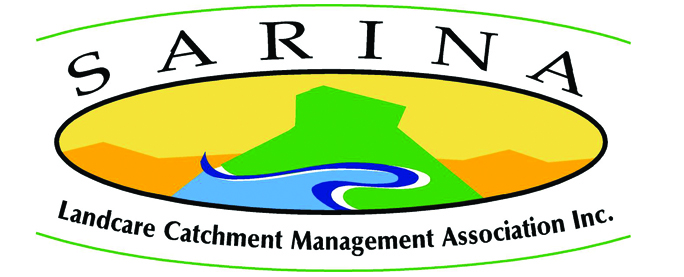Hairy senna
Senna hirsuta, Fam. Caesalpiniaceae
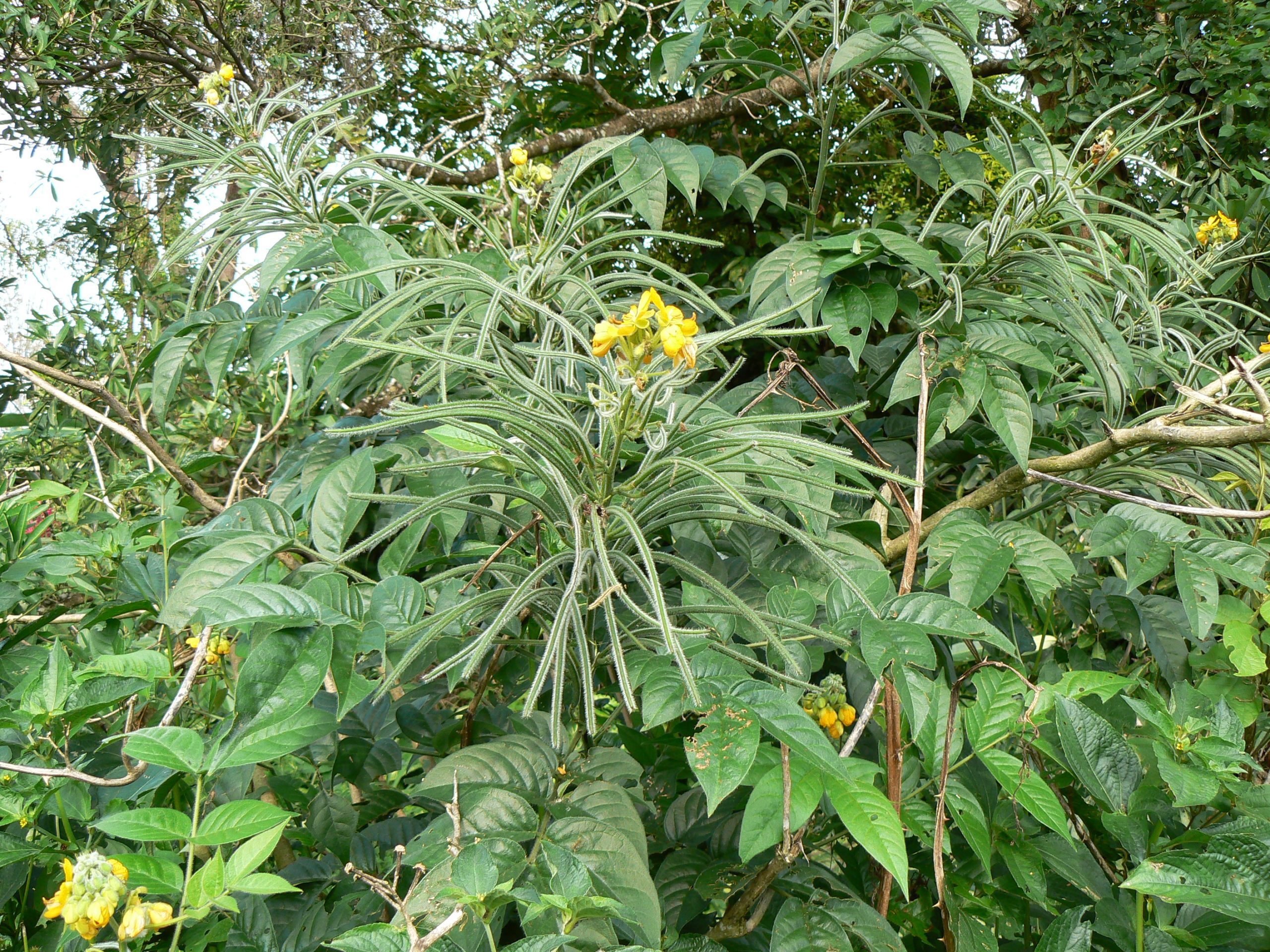
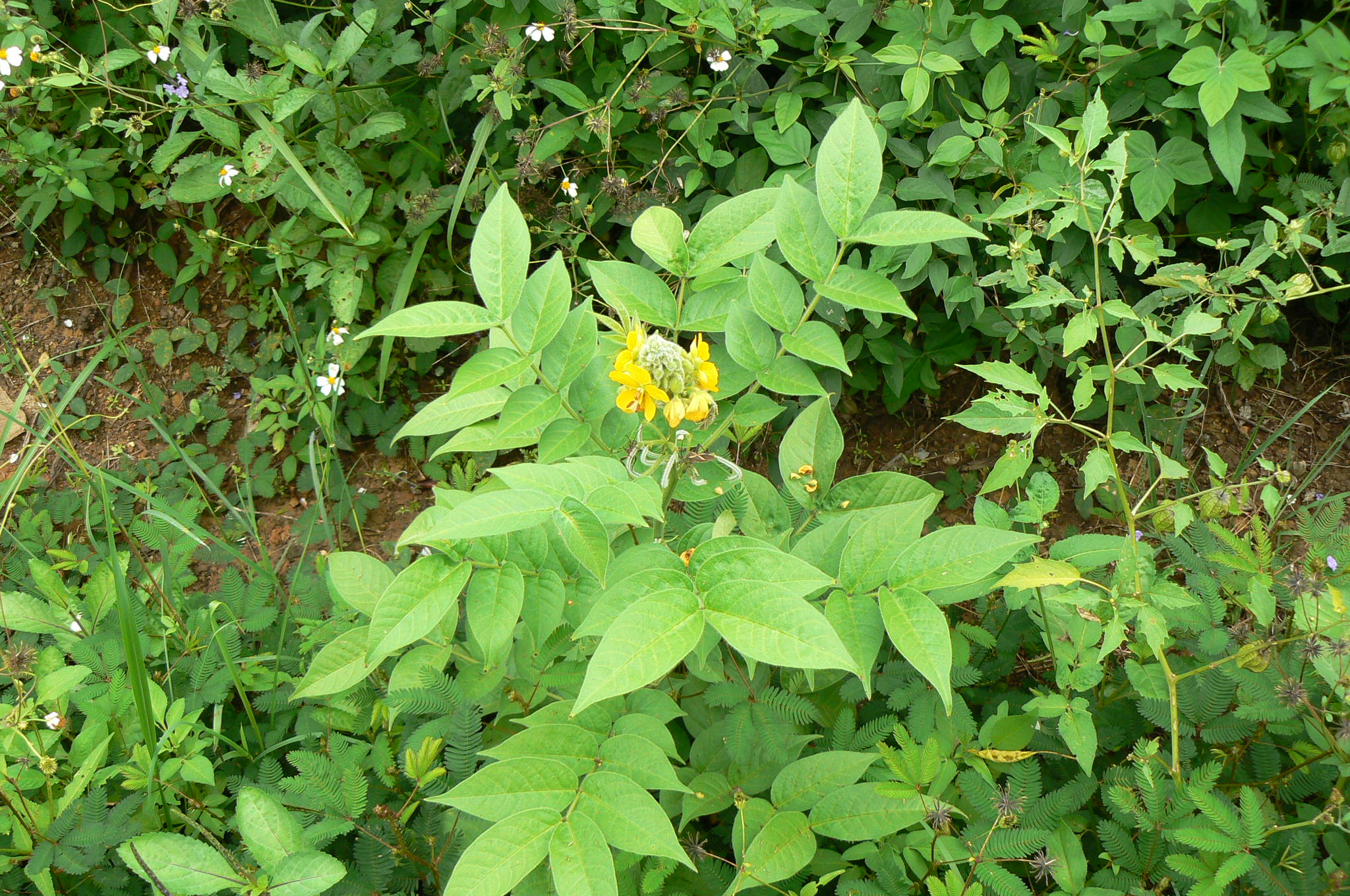
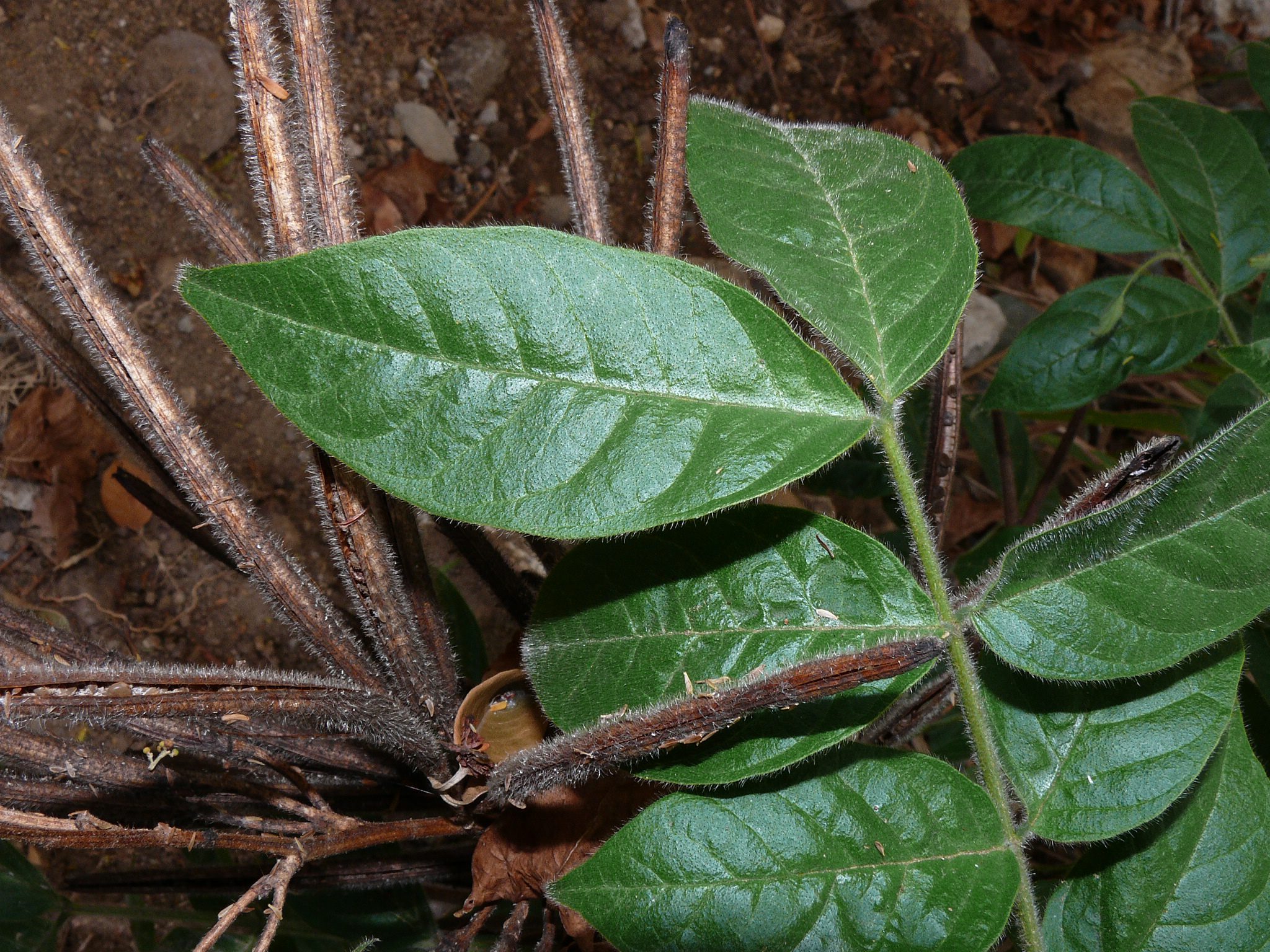
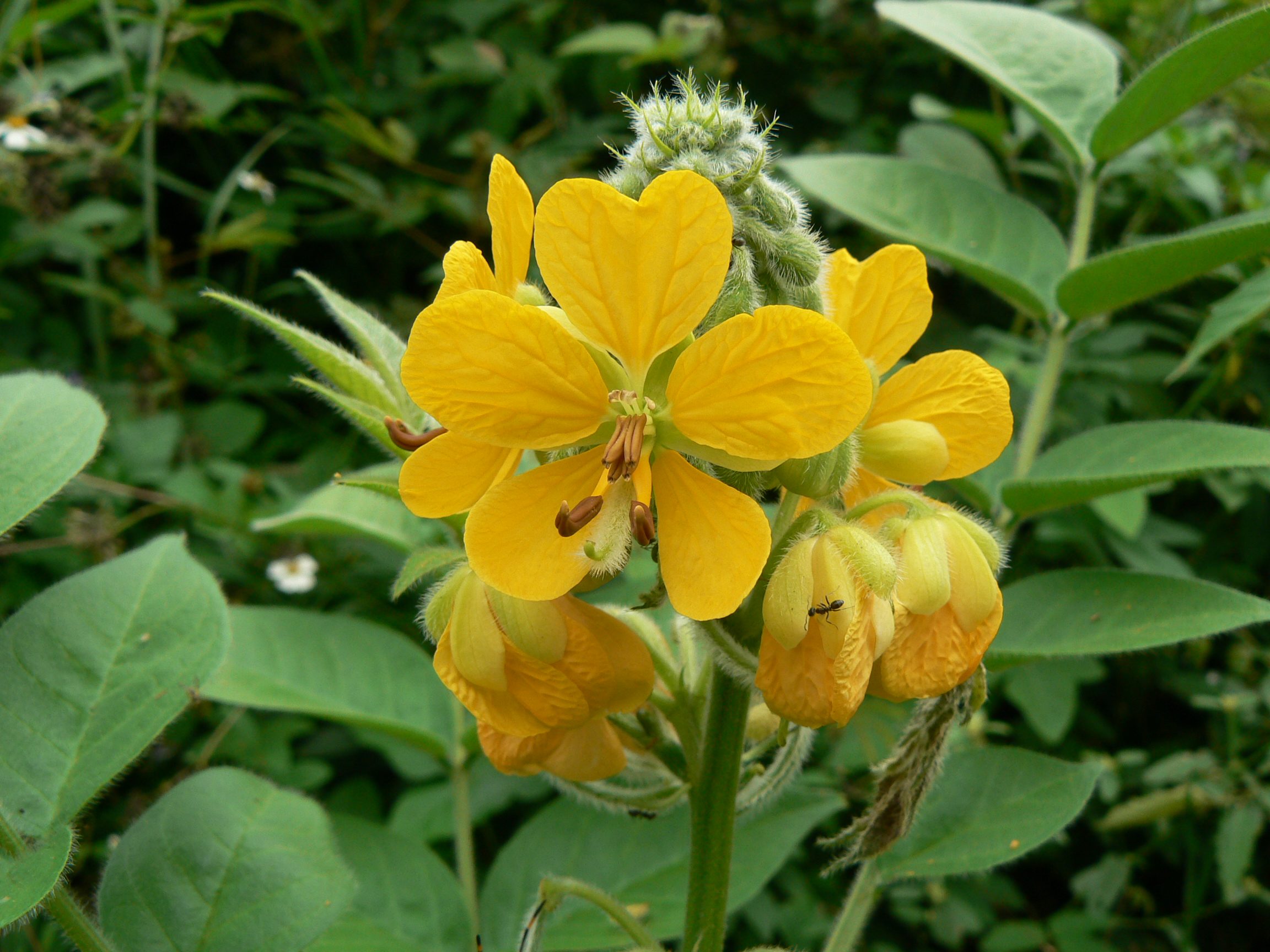
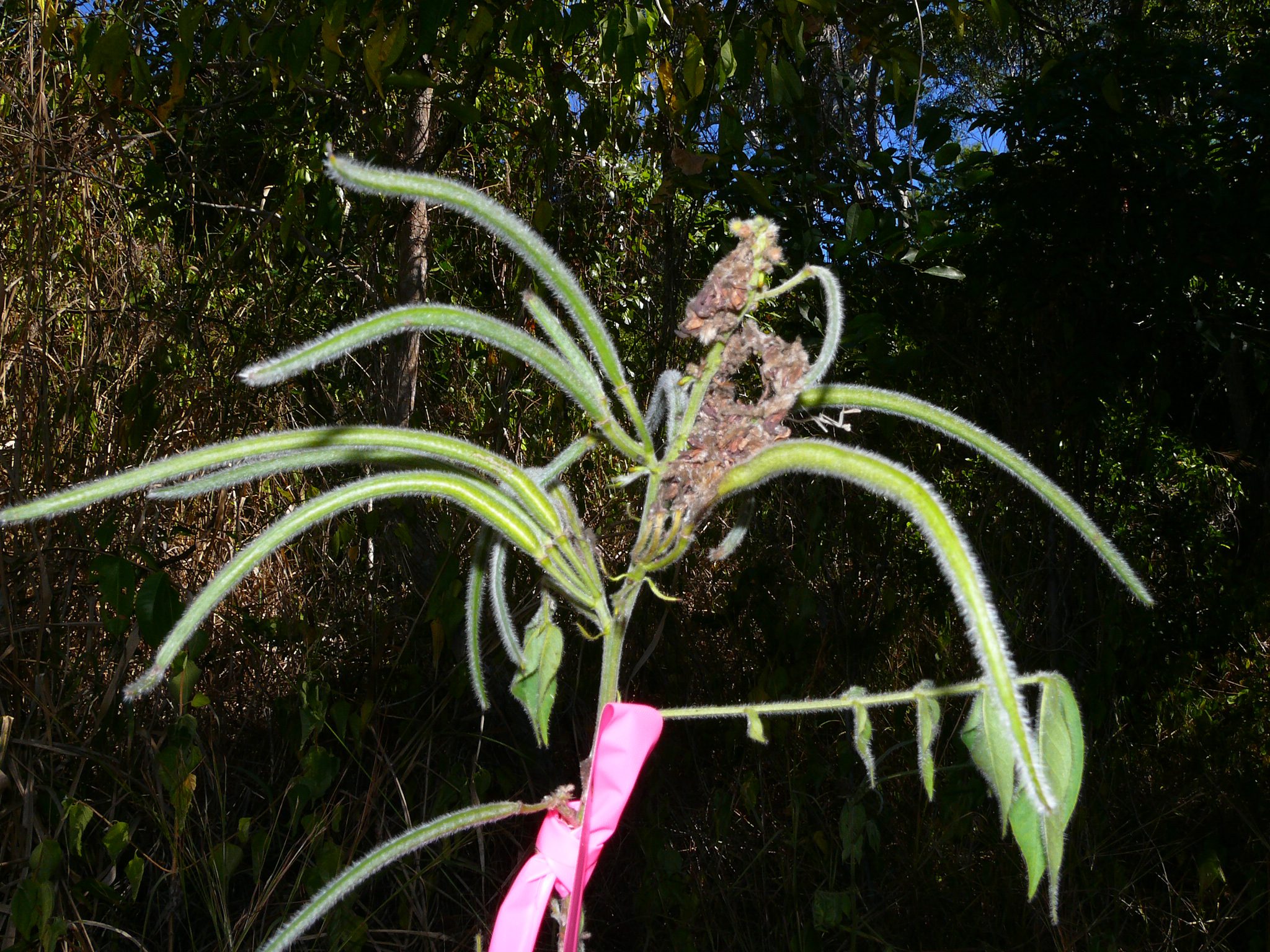
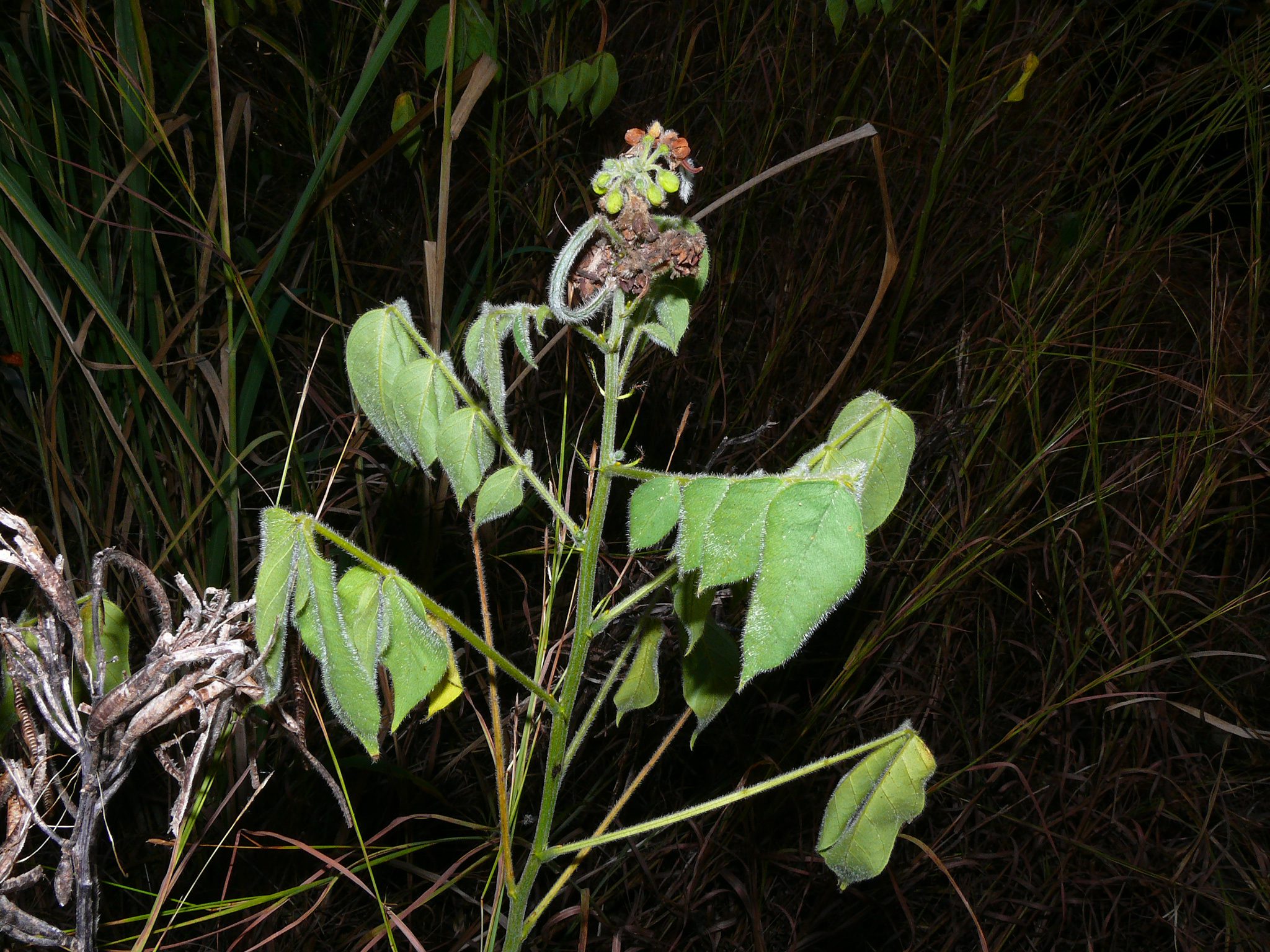
Erect or spreading, densely hairy shrub or herbaceous perennial 0.5-2.5m.
| Weed Category: |
Restricted invasive plants Category 3 Plants declared invasive under the Biosecurity Act 2014, that are present in QLD.
Not to be distributed or disposed of.
|
| Weed: | Yes |
| Form or habit: | Herb, Shrub |
| Family: | Caesalpiniaceae |
| Leaf: | Compound Alternate Compound, alternate pinnate with opposite stalkless or shortly stalked leaflets, lacking a terminal leaflet; usually increasing in size from lower to upper pairs. Glands may be present on stalk or between lower leaflets. Stipules often deciduous. Total length 95-270mm including the 40-65mm long ribbed stalk that has one prominent conical gland at the base. Leaflets usually 3-6 pairs, sometimes more, ovate to elliptic, 20-120 x 10-50mm, tapering into a pointed tip. All parts densely hairy. Crushed leaves have an unpleasant smell. |
| Flower conspicuous: | Conspicuous |
| Flower colour: |
Yellow |
| Flower description: | Yellow somewhat orchid-like or cup-shaped with 5 sub-equal-sized petals; 12-17mm long; borne in 2-8 flowered clusters in upper leaf axils. |
| Fruit conspicuous: | Conspicuous |
| Fruit colour: |
Brown, Grey |
| Fruit: | Dry |
| Fruit description: | Dehiscent pods with hard seeds. Pods erect curved, slightly flattened, grey-brown and densely hairy, 100-140 x 4-6mm, containing 50-90 dull creamy-brown to dark brown plump rounded seeds to about 3mm in diameter. For comparison, seeds of S. obtusifolia and S. tora are somewhat rhomboid (pear or lozenge shaped). |
| Habitat: | |
| Distribution | |
| Food source for: | |
| Toxicity: | Toxic if ingested |
| Origin: | South America |
| Notes: | Spread by: seeds expelled from opening pods, water, contaminated soil on machinery (harvesting, earthmoving, and 4WDs), animal hooves, manure, contaminated harvest material and fodder. Invades/threats: ‘everywhere'; grazing, agriculture and the environment are all under threat. Notes: weedy sennas produce numerous seeds that, in a short time, may accumulate a large soil seed-bank. As seeds remain viable for up to a decade or more, germination can take place over many years, whenever conditions are suitable. They are capable of forming dense stands and compete with pastures and crops for light, moisture and nutrients. Hairy senna generally doesn’t form stands as dense as those of sicklepod (Senna obtusifolia). Most species are toxic to cattle and while mature pods and seeds are sometimes eaten, the plants are relatively unpalatable and soon die off. Category 3 restricted invasive plant under the Biosecurity Act 2014, it must not be given away, sold, or released into the environment without a permit. The Act requires everyone to take all reasonable and practical steps to minimise the risks associated with invasive plants and animals under their control. This is called a general biosecurity obligation (GBO). |
| Information sources: | Mackay Regional Pest Management Group (2018) Weeds of the Mackay Whitsunday Region Second Edition. |



